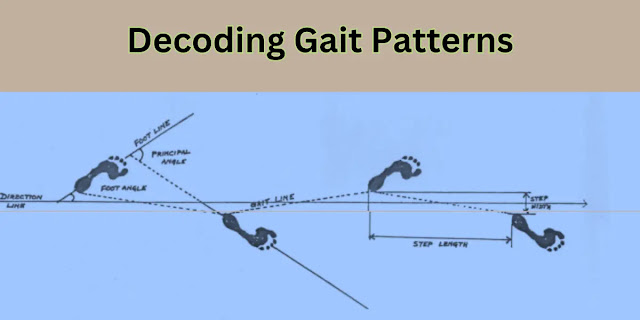Decoding Gait Patterns: Tracking Footprints in Forensic Investigations and the Legacy of Ancient Indian "Khojis"
Introduction:
In the realm of forensic investigations, understanding the intricacies of gait patterns has become a pivotal tool in deciphering the identity of perpetrators. Remarkably, this practice has historical roots in ancient India, particularly in the techniques employed by the revered "Khojis" from rural regions, notably around Rajasthan. The discerning abilities of these individuals, despite their lack of formal education, shed light on the significance of gait patterns and their vital role in criminal tracking.
Understanding the Gait Pattern:
The study of the gait pattern delves into the meticulous analysis of the footprints or footwear imprints left behind by perpetrators at the crime scene. This comprehensive examination involves the careful consideration of various key characteristics, including:
1. The Direction Line: An imaginary line tracing the center path followed by the individual, offering insights into the direction of movement.
2. The Gait Line: Formed by connecting the heel marks, the gait line might manifest as irregular, zig-zag, or broken, providing indications of specific walking styles or external factors influencing the gait.
3. The Foot Line: A central line through the foot or footwear, aligning with the direction line, crucial for understanding the positioning of the foot during movement.
4. The Foot Angle: The angle between the foot line and the direction line, inherently distinctive to each individual, exhibiting variations influenced by gender, weight, or physiological factors.
5. The Principal Angle: The angle between consecutive left and right foot lines, representing the sum of the two-foot angles, aiding in the differentiation of gait patterns.
6. The Step Length: The distance between successive heel marks, offering insights into the individual's walking pace and style, influenced by factors such as height, gender, and physical ailments.
7. The Step Width: The distance between the two feet along the direction line, offering further insights into specific traits influenced by weight distribution, deformities, or other distinguishing features.
Key Observations:
In addition to the fundamental gait pattern elements, forensic investigators pay close attention to various other attributes present in footprints, including the general footprint shape, dimensions of toe marks, ball of the foot, instep, heel marks, crease marks, phalange marks, cut marks, and distinctive pressure points. These meticulous observations collectively contribute to the comprehensive understanding and identification of individuals based on their unique gait patterns.
Conclusion:
The legacy of the ancient Indian "Khojis" serves as a testament to the longstanding recognition of gait patterns as an indispensable component of tracking and identifying perpetrators. Incorporating these historical insights into modern forensic investigations further underscores the importance of gait pattern analysis in solving complex criminal cases. Through a deep understanding of these footprints, investigators continue to unravel the mysteries surrounding crime scenes, leaving no stone unturned in the pursuit of justice.




.webp)




.webp)




.png)


0 Comments
If you have any doubts, let me know.